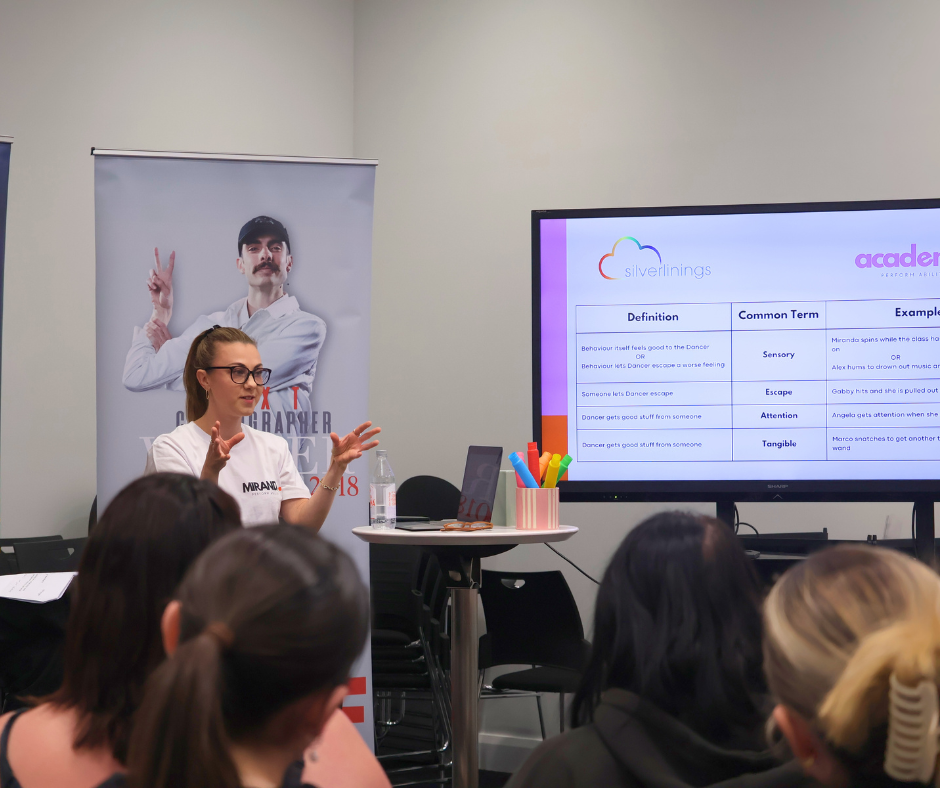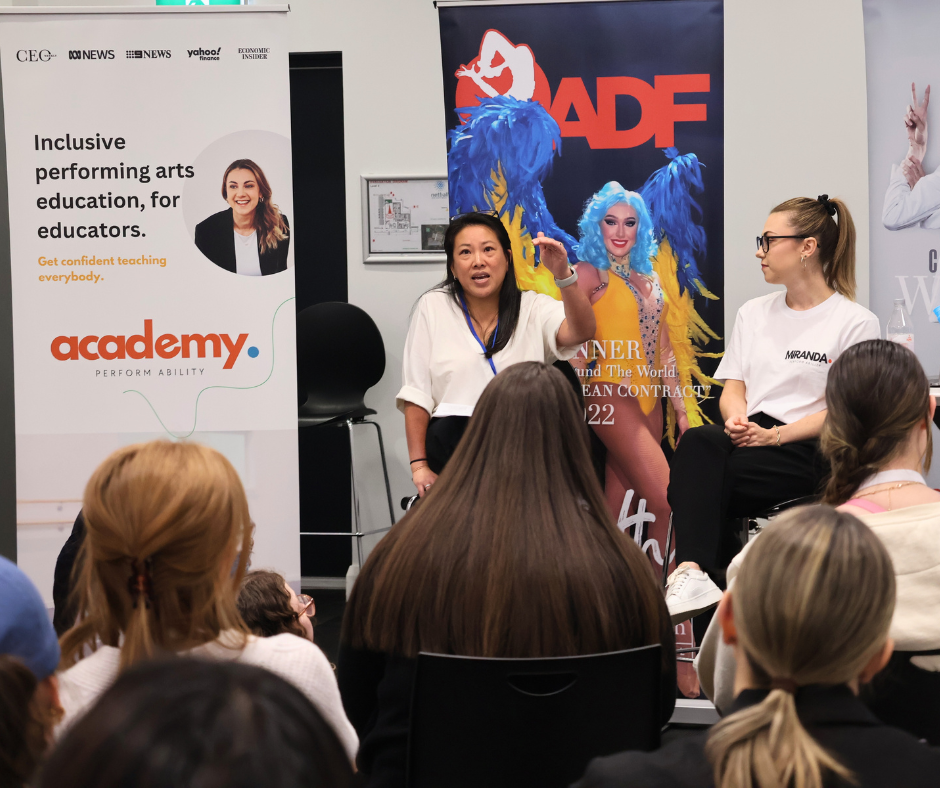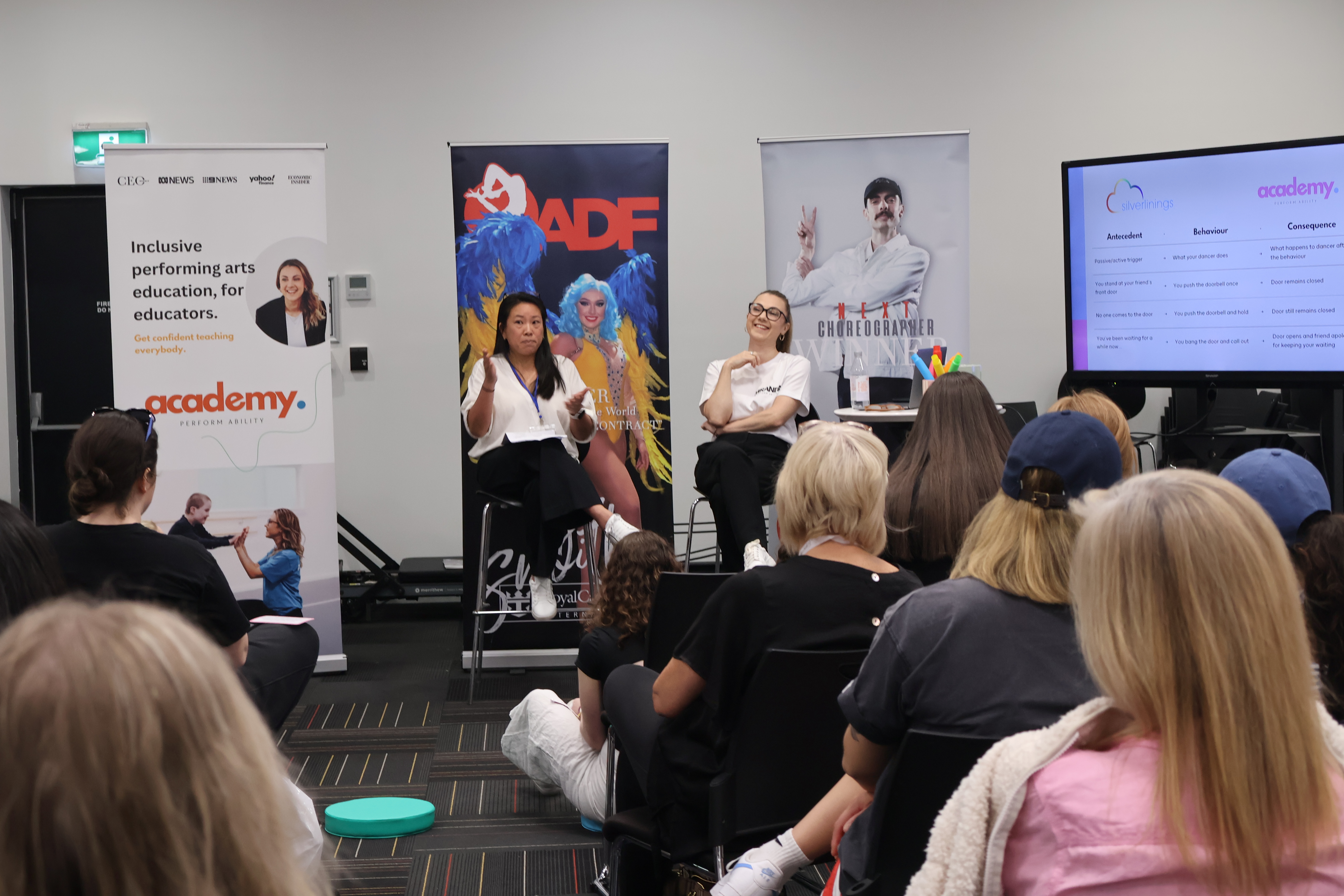
Managing Student Behaviour: Dealing with Neurodiversity and Inclusivity — Insights from Miranda Daisy and Karen Wong at the Australian Dance Festival
Managing Student Behaviour: Dealing with Neurodiversity and Inclusivity — Insights from Miranda Daisy and Karen Wong at the Australian Dance Festival
Last weekend, the Australian Dance Festival witnessed an eye-opening presentation by Miranda Daisy, founder of Perform Ability, and Karen Wong, one of the most experienced ABA and autism clinicians in Australia. Their talk, titled "Managing Student Behaviour: Dealing with Neurodiversity and Inclusivity," tackled the challenges and solutions for teaching students of all abilities in a dance environment.
Miranda and Karen dove deep into understanding behaviour through the lens of neurodiversity, focusing on how dance educators can manage various behaviours while fostering an inclusive classroom. Their approach emphasized compassion, understanding, and practical techniques to create an accessible and supportive environment for all students, regardless of their unique needs.

Understanding Behaviour in Neurodiverse Students
At the core of the presentation was the Antecedent-Behaviour-Consequence (ABC) framework, a method for breaking down behaviour in a way that helps teachers understand and respond to it effectively. By identifying the triggers (antecedents), behaviours, and consequences, educators can adjust their approach to avoid miscommunications and foster a more inclusive classroom. A notable example they shared was how a student might hum to drown out overwhelming sounds in class — rather than viewing this as disruptive, Miranda and Karen encouraged teachers to interpret it as a form of sensory management, requiring a tailored response such as offering headphones or a quiet space.
Practical Strategies for Inclusive Teaching
Miranda and Karen didn’t just explain the theory behind managing student behaviour; they also provided a wealth of actionable strategies that could immediately improve the classroom experience. From "attention bathing" (providing students with short, frequent breaks to maintain focus) to using visual supports to ease communication, the duo shared practical ways teachers can adapt their teaching methods.

Preventative strategies were also a major talking point. For instance, they discussed how changing the environment or teaching students alternative ways to communicate their needs could prevent behaviours from escalating. This might look like providing noise-cancelling headphones to a student who gets overwhelmed by music or teaching a student to say “I don’t want to jump” instead of stopping others from participating.
Communication and Calming Techniques
Effective communication is key when working with neurodiverse students, and Miranda and Karen offered a range of tips for fostering better understanding in the dance studio. They encouraged instructors to use clear, concise instructions and avoid sensory overload by giving students ample time to respond. Additionally, they emphasised the importance of monitoring tone and avoiding sarcasm, which can confuse students who process language differently.
Calming strategies were also covered, including simple but powerful tools such as slow counting, firm physical touch, or access to calming items like fidget toys. These techniques can be used to help students regain control when they feel overwhelmed, creating a safer and more supportive learning space.

Encouraging Motivation and Positive Behaviour
To wrap up the session, the presenters shared their insights on maintaining student motivation. Miranda and Karen recommended using students' interests as leverage to keep them engaged in class and providing frequent and specific social praise to reinforce positive behaviours. For tangible rewards, they suggested Reward Boxes, where students could pick small toys as a celebration of achievement.
Final Thoughts
Miranda Daisy and Karen Wong’s presentation at the Australian Dance Festival highlighted the importance of understanding, patience, and adaptability when working with neurodiverse students. Their blend of theory and practical advice gave dance educators valuable tools to better support their students and create more inclusive spaces.
As dance continues to evolve as an art form, talks like these remind us that the heart of education is connection, empathy, and the willingness to learn from each other.